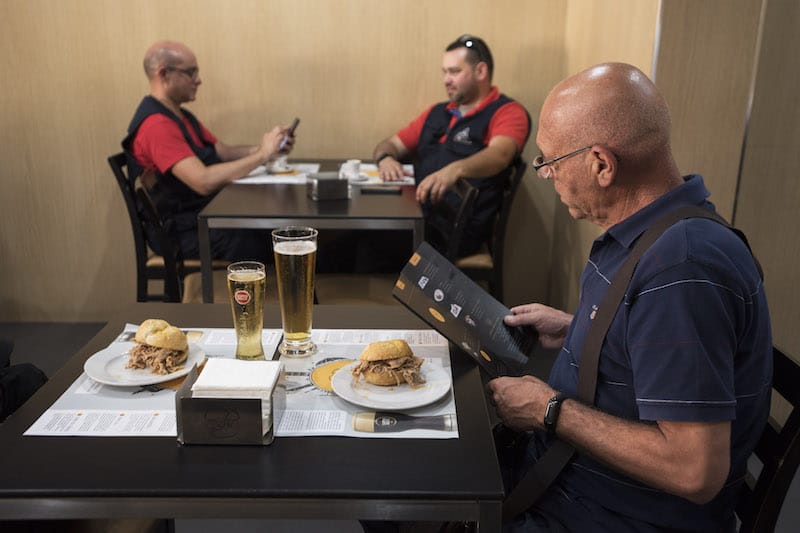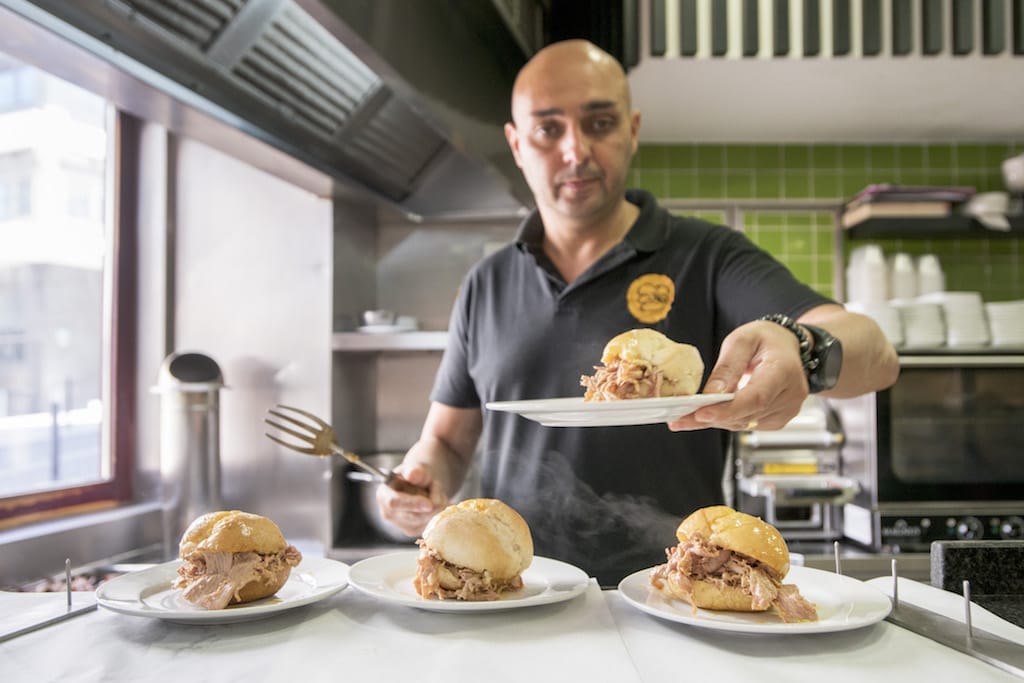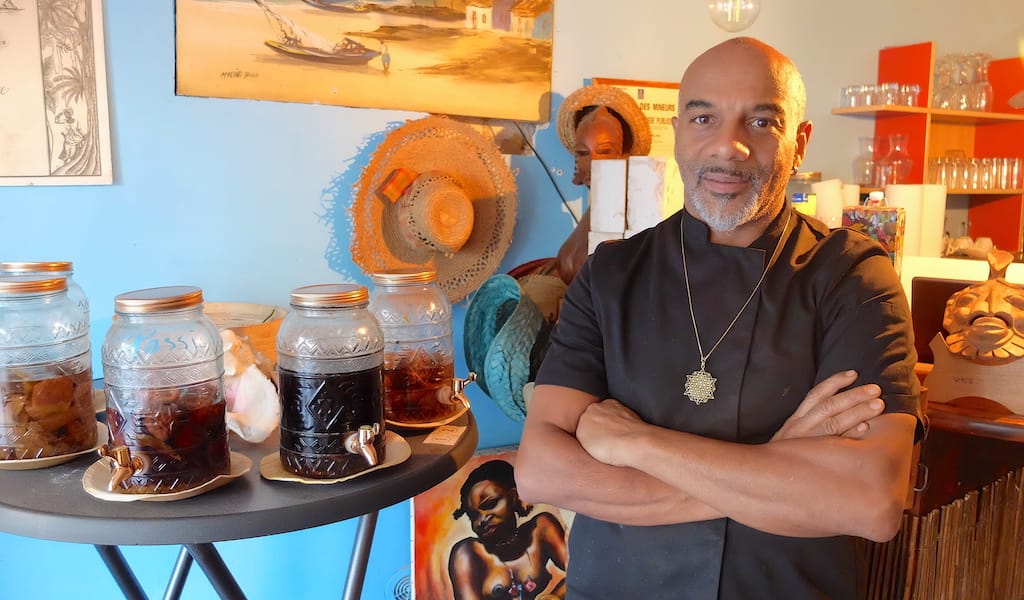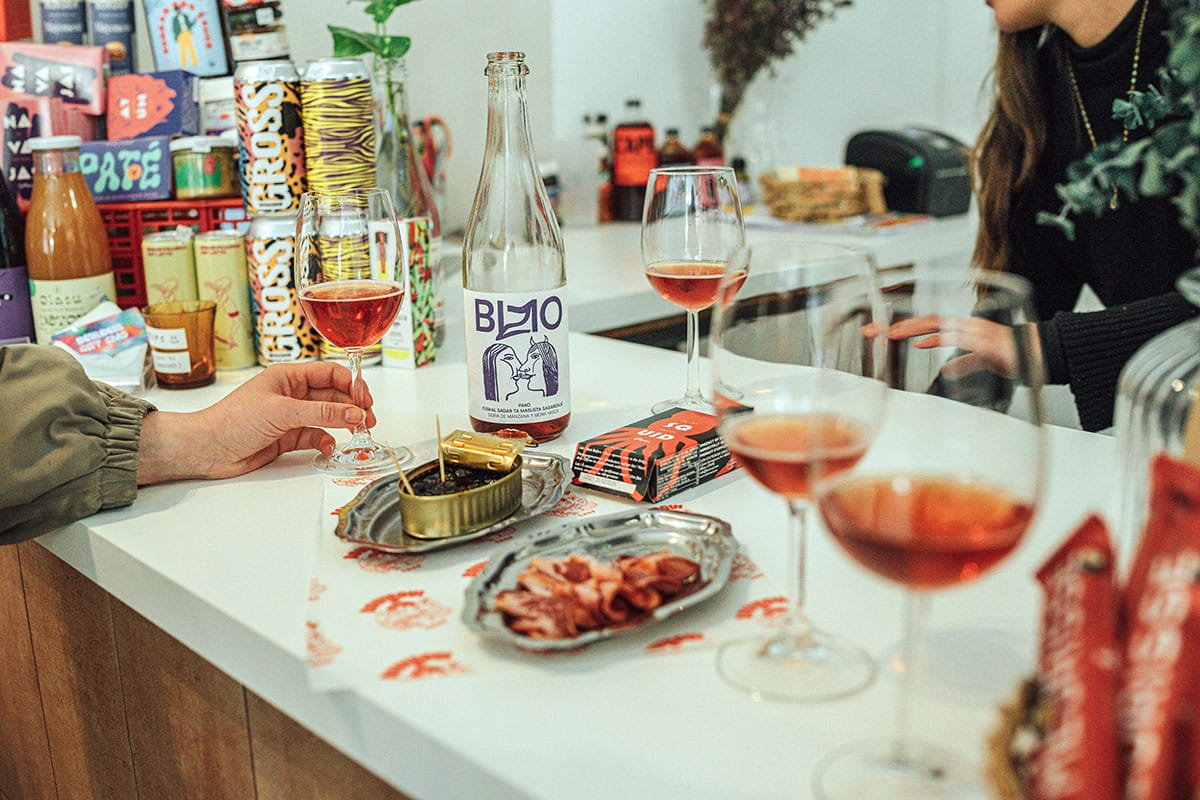You would think Sérgio Oliveira, the owner of Conga in Porto and the secret-keeper of its legendary recipe for bifanas, would be tired of the restaurant’s signature dish. But you’d be wrong. “As much as I try not to eat it, I cannot. It is impossible,” he says. “One always eats it; there is no chance not to.”
It’s a simple but addictive dish. Pork, cooked all day in a mysterious spicy sauce and stuffed into a piece of bread that looks a bit like a roll– at first glance, it does not seem to impress. But Porto continues to hide the best and tastiest of its secrets in the simplest things in life.

“It was my father who invented the famous bifanas with this wonderful sauce,” says Sérgio, who’s been running Conga the last eight years. It’s been more than 40 years since Manuel Oliveira returned to Portugal from Angola and opened the restaurant in 1976. Revolution and the subsequent establishment of democracy had taken place in Portugal, but Manuel was the man behind a new reign, that of bifanas in spicy sauce. Sérgio tells the story: “The day the restaurant opened, after three hours the meat sold out. It was crazy. No one was expecting that.” It was a time of relative scarcity in the country. “There was some difficulty in having the products available for the whole day. The place had to close for two weeks from one moment to the next because, simply, there was no meat,” he says.
“As much as I try not to eat it, I cannot. It is impossible.”
“What I inherited from my father were the bifanas, the quail and the hot dogs with the sauce that everyone loves,” Sérgio says, listing off other establishment items on Conga’s menu. But in his eight years as owner, he’s made his own additions, including chamuças (Portuguese samosas) and another Porto classic, francesinha, made with bifanas. There is also caldo verde (a green soup of potatoes and collard greens), papas sarrabulho (potatoes cooked with pork blood, various meats, cumin and lemon), as well as more gourmet options. Sérgio says he wants to continue in the tradition of the last 40 years by preserving those things that keep his customers coming back, while also investing in “the future clients.”

Conga has certainly grown since it first opened. It now includes the space next door and added two floors. It’s gone from employing 12 people to 33, and has multiplied the number of bifanas that leave the pan daily: “More than a thousand, surely,” Sérgio says. Out of necessity, the restaurant has installed an industrial kitchen and even hired a food engineer. “We are ready for more,” the manager says, describing plans to open another eatery in nearby Vila Nova de Gaia. “But I could never overtake the man who created it from scratch.” For his father Manuel was a man of innovation, not just a visionary for good sauce. When the restaurant opened, “Portugal was a very young democracy and the kitchens were an enclosed space in the back of houses. You could not see anything in there,” Sérgio says. His father “threw a stone in the puddle by putting the kitchen in front of everyone.” Just at the entrance, viewable from the street, are the vats of spicy sauce, where the bifanas meat marinates. Today, any Conga employee is able to replicate the sauce. “Everything is parameterized,” the owner says. There are no deviations.
It’s a success that lives beyond the itinerary of a tour guide. “There was a period when ambulances were clogging the streets in the morning. There were firemen who had worked all night, patients – some in wheelchairs or crutches – [who would come] to eat bifana early,” Sérgio says. Some customers have been coming every day for years. Others, he says, “leave the airport and come directly here with their bags and with the taxis outside waiting.”

As for ourselves, we had not taken three steps into Conga before someone behind the counter threw us the kind of welcoming “good evening!” that demands a response. In two seconds, we had a table. Lucky it was not the weekend, for even the attentive staff wouldn’t be able to help the slow lines. From the moment we sat, everything followed at a frenetic pace. If you can only go to Conga once in a lifetime you must order a bifanas sandwich (maybe even two would be better), which will have sauce on the side (even the bread is dipped in it). Grab a beer – or two – to wash it down, as well.
Cláudia BrandãoRicardo Castelo
Published on June 07, 2019
Related stories
February 7, 2022
MarseilleIf Noailles is known as the “belly of Marseille” for its fragrant food stalls, street food and markets, its neighbor Cours Julien is where locals fill their bellies sitting down. The street-art-splashed buildings house a smorgasbord of restaurants from every corner of the world, including the Ivory Coast, India, Palestine and Peru. Those on the…
September 7, 2012
AthensUpdate: Bollywood Restaurant and Jaipur Palace are sadly no longer open. The so-called “ethnic” cuisines – from Middle Eastern and Indian to Chinese and Japanese – came to Athens relatively late, in the mid-1980s, and were a costly affair. Athens’ first “exotic” restaurant, the Kona Kai in the Athens Ledra Mariott Hotel, opened its doors…
March 1, 2024
San Sebastián | By Culinary Backstreets
San SebastiánQuick bite: On this full-day exploration of San Sebastian, we’ll get an edible crash course on the very roots of this seaside city's cuisine, delighting in peak seasonal ingredients, learning about local culinary traditions and visiting iconic haunts, old and new.




















































































